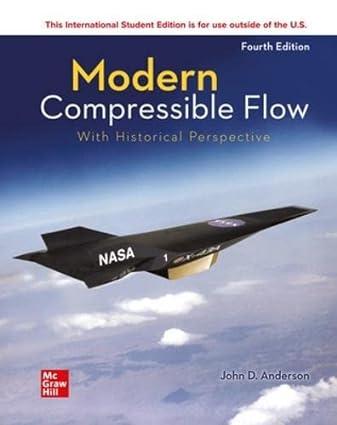Answered step by step
Verified Expert Solution
Question
1 Approved Answer
8. NACA airfoils (from the National Advisory Committee for Aeronautics, predecessor of NASA) are parametrised by two functions f(x) and f(x) representing the upper

8. NACA airfoils (from the National Advisory Committee for Aeronautics, predecessor of NASA) are parametrised by two functions f(x) and f(x) representing the upper and lower surfaces of an airfoil cross-section, respectively. These functions can be expressed as fox(x)=tmp(x) [0,1], where > 0 is a vertical scaling parameter, a is a vector of constant parameters, and (x) is a vector collecting a number of pre-defined functions of x: --(0)- 9(x)-> For example, the so-called no012 symmetric airfoil assumes T=0.12 (maximum thickness), a (1.4845,-0.6300-1.7580.1.4215-0.5180), and a =-ay? 0.1 0.05 -0.05 02 0.4 0.6 0.8 fu(x) 3= (a) Show that for symmetric airfoils (ay=a.a =-a) to have zero thickness at x=1, it is necessary that the sum of components of a is zero. (b) Calculate the area of an arbitrary symmetric airfoil cross-section with a = a, a, -a, and a=(aa). Use the result to calculate the cross-sectional area of the n0012 airfoil with the parameters given above. (c) What volume of plastic is required to 3D print ten n0012 airfoil ribs of thickness 0.2, assuming no loss and units of centimetres? (d) Extra (not required for full marks): how would you need to change the functions fu(x) so that the length of the cross-section is not 1, but 10, without changing the shape?
Step by Step Solution
There are 3 Steps involved in it
Step: 1

Get Instant Access to Expert-Tailored Solutions
See step-by-step solutions with expert insights and AI powered tools for academic success
Step: 2

Step: 3

Ace Your Homework with AI
Get the answers you need in no time with our AI-driven, step-by-step assistance
Get Started


